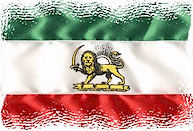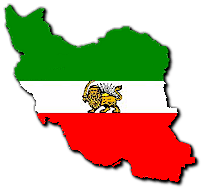Maize Wheat Barley Oats Rye Buckwheat Rice
Growing your own sprouts is fun and easy if you follow the six rules of sprouting:
1. Rinse often (2-3 times/day).
2. Keep them moist, not wet.
3. Keep them at room temperature.
4. Give them air to breathe.
5. Don’t grow too many in one container.
6. Keep them in a dark place.
The first step is choosing which seeds to sprout. The standard sprout is the alfalfa sprout. This is the sprout often served on salads and sandwiches and your favorite restaurant or deli. However, there are many other seeds that make excellent sprouts, each with their own flavor and nutritional composition. You can sprout barley, broccoli, buckwheat, cabbage, fenugreek, garbanzo, green peas, lentils, mung beans (found in Chinese food), radishes, red clover, wheat, soy beans, sunflowers and more. Always use seeds packaged for sprouting. Buying bulk seeds and grains may seem cheaper than seeds packaged for sprouting, but they may not be worth it. Unless they are packaged as high-germination spouting seeds, only a portion of them will sprout. The ones that do not sprout, will likely ferment and spoil the batch. Do not use seeds meant for planting. They are often treated with chemical pesticides, fungicides and mercury coatings. Also, do not use seeds that have molds growing on them. Molds produce toxins which can cause food poisoning.
Growing sprouts in a jar : The easiest method is to grow sprouts in a glass canning jar. Any size jar will do. To provide plenty of fresh air, cover the top of the jar with muslin, cheese cloth or nylon mesh screen and secure with a rubber band. You can also buy specially sprouting lids designed for this purpose.
Step One: Soaking
For a quart-sized jar, put 1 ½ to 2 tablespoons of small seeds (up to 1 cup if using larger seeds like green peas or garbanzo) in the sprouting jar. Cover top of jar with cloth or sprouting lid and rinse the seeds in warm (not hot) water. Drain and refill so that water is about an inch above the seeds. Let the seeds soak 8-12 hours (overnight). Protect from light by covering with a dish towel or placing in a cupboard.
Step Two: Rinsing
Rinse 2 to 3 times per day for 2 to 3 days. After thoroughly draining the rinse water, lay the jar on its side to spread out the seeds. Do not expose to light. After 2 to 3 days the sprouts should be filling up the jar.
Step Three: Removing Hulls
After 2 to 3 days the sprouts will have thrown off their hulls. To remove the hulls, place the sprouts in a bowl and run cool water over them. Most of the hulls will either float to the top or sink to the bottom making them easy to remove. (Note: not all seeds have hulls.)
Step Four: Harvesting
Rinse sprouts in cool water and remove any remaining hulls. Drain in a colander, but do not allow the sprouts to dry out. Place in an air-tight bag leaving room for air circulation. If your sprouts need to develop chlorophyll or carotene there is one final step. (The seed package directions should tell you whether greening is necessary.)
Step Five: Greening
Once the hulls are removed, place the sprouts back into the sprouting jar or into a clear plastic airtight bag. Put the sprouts in indirect sunlight. It takes about a day for the chlorophyll and carotene's to develop. Once the sprouts are ready rinse, drain, and eat, or refrigerate.
Storing:
Sprouts will keep for about a week in the refrigerator if you rinse them once every day or two. Be sure to keep the sprouts from freezing as they are frost sensitive.
Seeds are easy to store. Put them an a glass jar with an air-tight lid and keep them in a cool, dark storage area. They will keep for a year or more.
What foods are in the grain group?
Any food made from wheat, rice, oats, cornmeal, barley or another cereal grain is a grain product. Bread, pasta, oatmeal, breakfast cereals, tortillas, and grits are examples of grain products. Grains are divided into 2 subgroups, whole grains and refined grains. Whole grains contain the entire grain kernel -- the bran, germ, and endo sperm.
Examples include: whole-wheat flour - Bulgar (cracked wheat) - oatmeal - whole cornmeal
brown rice Refined grains have been milled, a process that removes the bran and germ. This is done to give grains a finer texture and improve their shelf life, but it also removes dietary fiber, iron, and many B vitamins. Some examples of refined grain products are: white flour - de-germed cornmeal - white bread - white rice Most refined grains are enriched. This means certain B vitamins (thiamine, riboflavin, niacin, folic acid) and iron are added back after processing. Fiber is not added back to enriched grains. Check the ingredient list on refined grain products to make sure that the word “enriched” is included in the grain name. Some food products are made from mixtures of whole grains and refined grains. Some commonly eaten grain products are:
What's in the Grain Group?
How much is needed?
What counts as an ounce?
Health benefits & nutrients
Tips to help you eat whole grains
Grains
Vegetables
Fruits
Milk
Meat & Beans
Oils
Discretionary Calories
Physical Activity
Whole grains:
brown ricebuck wheat Bulgar (cracked wheat)oatmealpopcornReady-to-eat breakfast cereals:
whole wheat cereal flakesmuesli whole grain barley whole grain cornmeal whole ryewhole wheat breadwhole wheat crackerswhole wheat pasta whole wheat sandwich buns and rolls whole wheat tortillas wild rice Less common whole grains: amaranthmilletquinoasorghumtriticale
Refined grains:
cornbread*corn tortillas*couscous*crackers*flour tortillas*grits - noodles*Pasta*
spaghetti - macaroni - pitas*pretzels -Ready-to-eat breakfast cereals
corn flakeswhite breadwhite sandwich buns and rollswhite rice.
*Most of these products are made from refined grains. Some are made from whole grains. Check the ingredient list for the words “whole grain” or “whole wheat” to decide if they are made from a whole grain. Some foods are made from a mixture of whole and refined grains. Some grain products contain significant amounts of bran. Bran provides fiber, which is important for health. However, products with added bran or bran alone (e.g., oat bran) are not necessarily whole grain products.
Tips to help you eat whole grains
At Meals:
To eat more whole grains, substitute a whole-grain product for a refined product – such as eating whole-wheat bread instead of white bread or brown rice instead of white rice. It’s important to substitute the whole-grain product for the refined one, rather than adding the whole-grain product. For a change, try brown rice or whole-wheat pasta. Try brown rice stuffing in baked green peppers or tomatoes and whole-wheat macaroni in macaroni and cheese.
Use whole grains in mixed dishes, such as barley in vegetable soup or stews and Bulgar wheat in casserole or stir-fries. Create a whole grain pilaf with a mixture of barley, wild rice, brown rice, broth and spices. For a special touch, stir in toasted nuts or chopped dried fruit. Experiment by substituting whole wheat or oat flour for up to half of the flour in pancake, waffle, muffin or other flour-based recipes. They may need a bit more leavening. Use whole-grain bread or cracker crumbs in meatloaf. Try rolled oats or a crushed, unsweetened whole grain cereal as breading for baked chicken, fish, veal cutlets, or eggplant Parmesan. Try an unsweetened, whole grain ready-to-eat cereal as croutons in salad or in place of crackers with soup. Freeze leftover cooked brown rice, Bulgar, or barley. Heat and serve it later as a quick side dish.
As Snacks:
Snack on ready-to-eat, whole grain cereals such as toasted oat cereal. Add whole-grain flour or oatmeal when making cookies or other baked treats. Try a whole-grain snack chip, such as baked tortilla chips. Popcorn, a whole grain, can be a healthy snack with little or no added salt and butter. What to Look for on the Food Label: Choose foods that name one of the following whole-grain ingredients first on the label’s ingredient list: “brown rice”“Bulgar”“graham flour”“oatmeal”“whole-grain corn”“whole oats”“whole rye”“whole wheat”“wild rice”
Foods labeled with the words “multi-grain,” “stone-ground,” “100% wheat,” “cracked wheat,” “seven-grain,” or “bran” are usually not whole-grain products. Color is not an indication of a whole grain. Bread can be brown because of molasses or other added ingredients. Read the ingredient list to see if it is a whole grain. Use the Nutrition Facts label and choose products with a higher % Daily Value (%DV) for fiber – the %DV for fiber is a good clue to the amount of whole grain in the product. Read the food label’s ingredient list. Look for terms that indicate added sugars (sucrose, high-fructose corn syrup, honey, and molasses) and oils (partially hydrogenated vegetable oils) that add extra calories. Choose foods with fewer added sugars, fats, or oils. Most sodium in the food supply comes from packaged foods. Similar packaged foods can vary widely in sodium content, including breads. Use the Nutrition Facts label to choose foods with a lower % DV for sodium. Foods with less than 140 mg sodium per serving can be labeled as low sodium foods. Claims such as “low in sodium” or “very low in sodium” on the front of the food label can help you identify foods that contain less salt (or sodium). Whole Grain Tips for Children
Set a good example for children by eating whole grains with meals or as snacks.
Let children select and help prepare a whole grain side dish. Teach older children to read the ingredient list on cereals or snack food packages and choose those with whole grains at the top of the list.
PERSIAN CULTURE
Richard Frye, Harvard Professor Iran Lover
Iran Lover...CNN interview with Richard Frye, Harvard Professor who loves to be buried in Esfahan...culture Iran
http://www.youtube.com/watch?v=0rUgelgRHnc
Watch video here Hide video - Related videos
Cyrus The Great, The Father, The Liberator, The Law-Giver and The A...
and the Jews as the Anointed of the Lord. According to Prof. Richard Frye from Harvard University “surely the concept of One World, ...
http://video.google.com/videoplay?docid=4370810649405947458
Watch video here Hide video - Related videos
Dr. Frye discusses greater Iran on CNN
on CNN...Dr. Frye, world renowned Iranologist, discusses greater Iran with CNN. Dr. Frye is also the author of the book "Greater
http://video.google.com/videoplay?docid=8599016121144917550
Watch video here Hide video - Related videos
Dying to get in
get in...American scholar American scholar Richard Frye likes Iran so much, he wants to be buried there. cnn's Asieh Namdar speaks with him. likes
http://www.youtube.com/watch?v=fviTiWJHZF4
Watch video here Hide video - Related videos
Korosh_e_Kabir.avi
2500 years ago and the humane treatment of vast empire he ruled. Professor Richard Frye of Harvard University said; "Surely the concept of One World, the
http://video.google.com/videoplay?docid=6175829765995272634
Watch video here Hide video - Related videos
DANCE MUSIC FOR THE NEW YEAR CELEBERATIONS
Click here to get your own player.

























 اخبار مربوط به زندانیان سیاسی و نقض حقوق بشر
اخبار مربوط به زندانیان سیاسی و نقض حقوق بشر

















 Tulips in Holland
Tulips in Holland












No comments:
Post a Comment